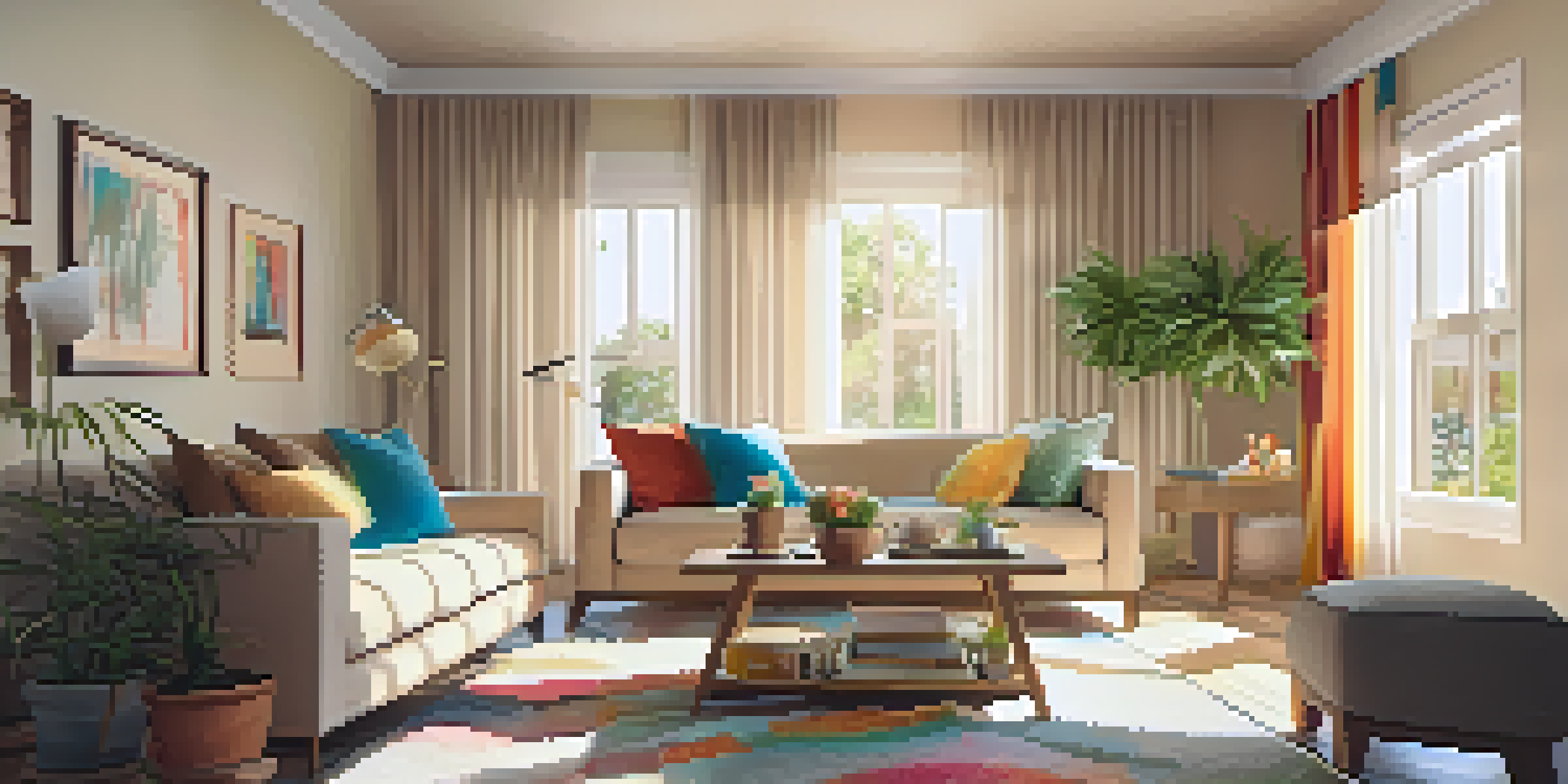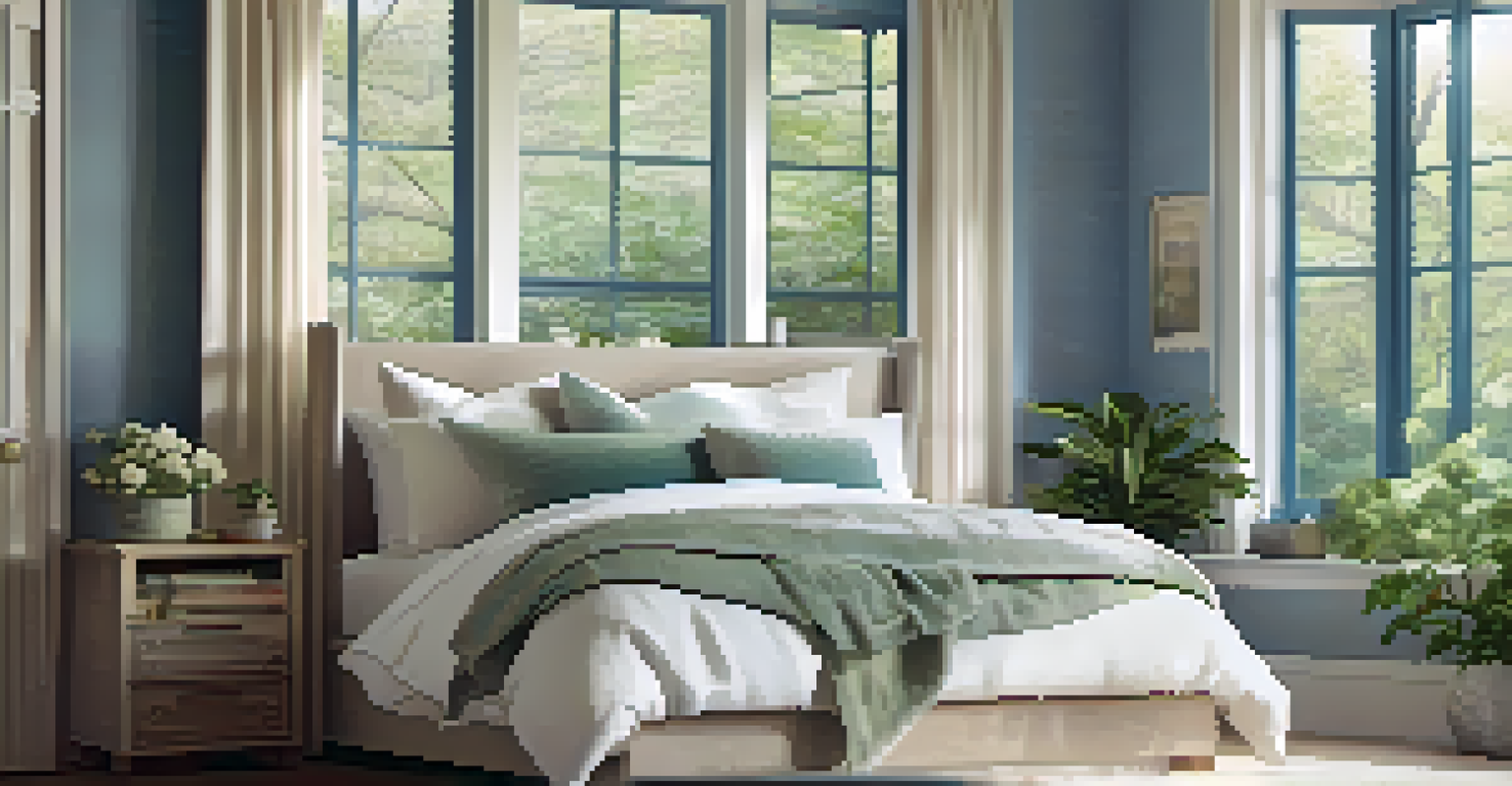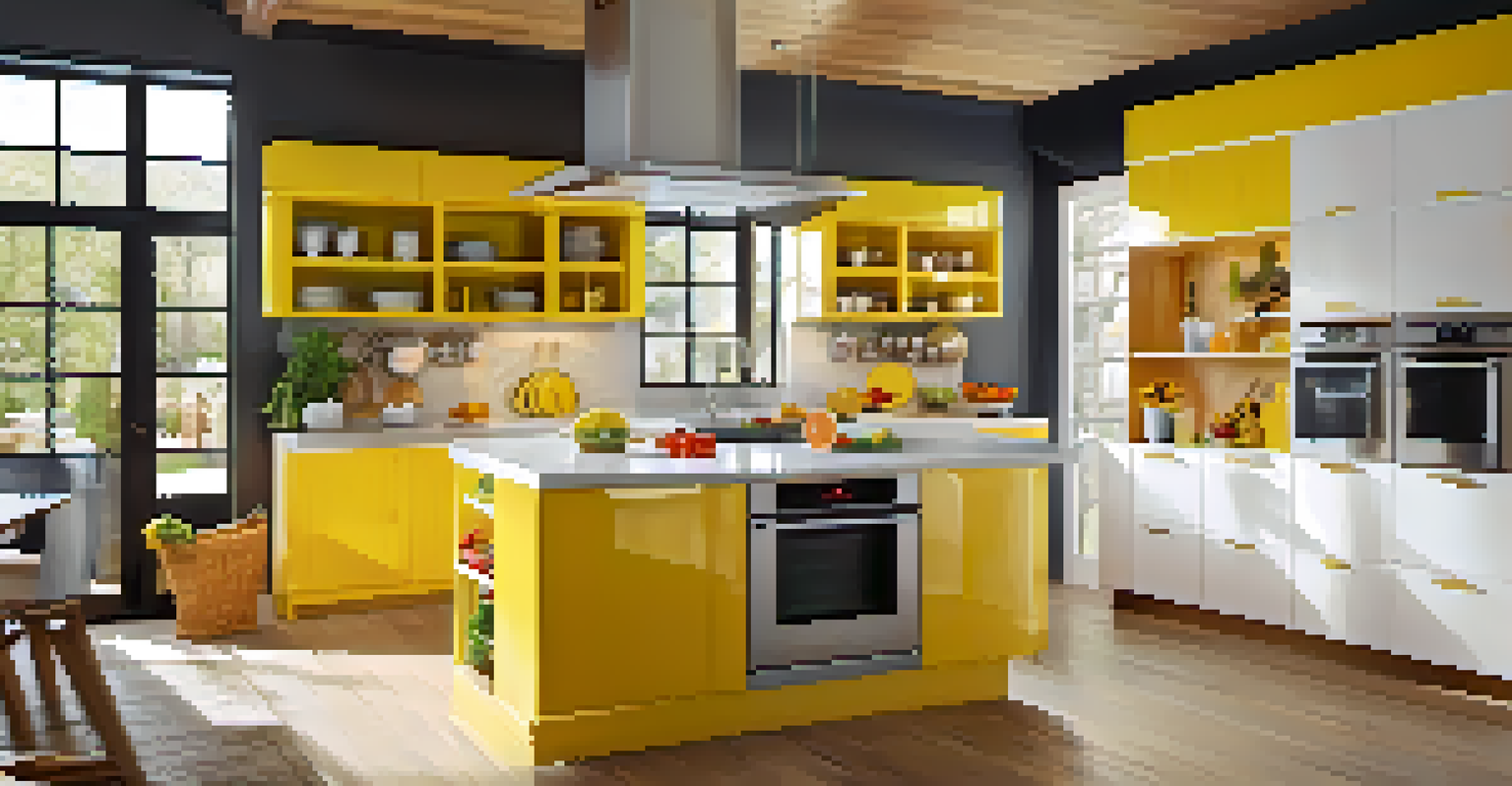Using Color Psychology in Your Home Renovation Design

Understanding Color Psychology Basics in Design
Color psychology is the study of how colors influence feelings and behaviors. It’s a fascinating concept that suggests different colors can evoke specific emotions. For instance, warm colors like red and orange can energize a space, while cooler hues such as blue and green tend to promote calmness.
Colors, like features, follow the changes of the emotions.
By understanding these fundamental principles, you can select colors that align with the atmosphere you want to create in your renovated space. Imagine stepping into a room painted in soothing greens, instantly feeling a sense of tranquility wash over you. This emotional response is precisely what color psychology aims to harness.
Ultimately, incorporating color psychology into your home design isn’t just about aesthetics; it’s about creating an environment that enhances your lifestyle and well-being.
Choosing Colors for Different Rooms in Your Home
Each room in your home serves a unique purpose, so it’s essential to choose colors that reflect those functions. For example, bedrooms often benefit from soft, muted tones that promote relaxation, while kitchens can thrive with brighter, more stimulating colors to inspire creativity. Think about how you use each space and what feelings you want to evoke.

In the living room, warm neutrals can create a welcoming atmosphere for family gatherings, while a home office might benefit from energizing blues or greens to enhance focus. These choices can significantly affect your mood and productivity in those spaces.
Color Influences Emotions
Different colors can evoke specific feelings, making it essential to choose hues that align with the atmosphere you want in your space.
Remember, it’s not just about selecting a favorite color; it’s about how that color will interact with the activities and emotions associated with each room.
The Power of Warm Colors in Home Renovation
Warm colors, like reds, oranges, and yellows, are known for their ability to energize and invigorate a space. These colors often create a sense of warmth and coziness, making them perfect for social areas like dining rooms or living rooms. When you think of gatherings with friends and family, these hues can foster a lively and inviting atmosphere.
The way to gain a good reputation is to endeavor to be what you desire to appear.
However, it’s essential to use warm colors thoughtfully, as they can be overwhelming in large doses. Consider using them as accent walls or in décor items to bring in warmth without overpowering the space. This way, you can enjoy the energizing effects without feeling overstimulated.
Incorporating warm colors can transform your home into a vibrant haven, encouraging connection and interaction among your loved ones.
Cool Colors for a Calm and Relaxing Environment
Cool colors, such as blues, greens, and purples, are excellent for creating serene environments. They often evoke feelings of calmness and tranquility, making them ideal for bedrooms and bathrooms where relaxation is key. Think of how a soft blue can mimic the sky, bringing a sense of peace into your space.
Using cool colors can also help make smaller rooms feel more expansive and airy. Light shades of blue or green can create an illusion of space, making your home feel more open and inviting. This is particularly beneficial in urban settings where square footage is often limited.
Purpose-Driven Color Choices
Selecting colors based on the function of each room enhances mood and productivity, as each space serves a unique purpose.
When designing your renovation, consider incorporating cool colors to foster a soothing atmosphere, ideal for unwinding after a long day.
Using Neutral Colors as a Base for Your Design
Neutral colors like whites, grays, and beiges are incredibly versatile and can serve as a great foundation for any design. They provide a blank canvas that allows you to add pops of color through furniture and accessories. This flexibility makes it easier to change the mood of a room as trends and your tastes evolve.
Moreover, neutral tones can make spaces feel larger and more cohesive, especially when used throughout an open concept design. They can create an airy and spacious feel, allowing light to bounce around the room effortlessly.
By blending neutral colors with vibrant accents, you can achieve a balanced look that feels both stylish and timeless.
Color Trends to Consider for Your Renovation
Keeping up with color trends can add a modern touch to your home renovation. Colors like earthy tones, deep greens, and muted pastels are gaining popularity, offering a fresh take on traditional palettes. These hues can bring a sense of harmony and connection to nature, which is especially appealing in today’s design landscape.
However, it's essential to choose colors that resonate with you personally rather than simply following trends. A trendy color might not feel right in your home if it doesn't align with your style or the emotions you want to evoke.
Trends vs. Personal Style
While keeping up with color trends is important, it's crucial to choose shades that resonate with your personal style and emotions.
Ultimately, finding a balance between current trends and your personal preferences will create a space that feels both fashionable and authentically you.
Lighting and Color: A Crucial Relationship
The relationship between lighting and color is a critical aspect of home design that’s often overlooked. Different light sources can dramatically alter how a color appears in a space. For example, natural light can enhance the vibrancy of a color, while artificial light may dull it down.
When planning your renovation, consider testing paint colors in various lighting conditions. A color that looks fantastic in the store might not have the same effect in your home. Observing how the light interacts with your chosen colors throughout the day can help ensure you achieve the desired effect.

Understanding this relationship allows you to choose colors that truly shine in your home, creating a harmonious and inviting atmosphere.
Final Thoughts on Color Psychology in Renovation Design
Incorporating color psychology into your home renovation is about more than just aesthetics; it’s about creating spaces that enhance your emotional well-being. By understanding how different colors affect mood, you can make informed choices that reflect your lifestyle and values.
Whether you opt for calming blues in your bedroom or vibrant reds in your living areas, remember that every color can tell a story. By selecting colors that resonate with you personally, you can create a home that feels uniquely yours.
As you embark on your renovation journey, keep in mind the power of color psychology to transform not just your home, but also your day-to-day experiences within it.